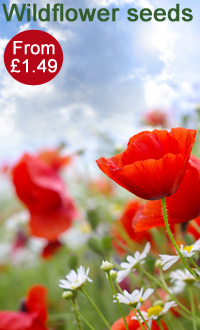
Natural pest control for wildlife gardens
Every year gardeners battle with pests and diseases, often resorting to chemical pesticides and weed killers to control the problem. However, if you create a garden for wildlife you will find a natural balance between pests and animals which work to keep your garden growing, and at the same time create a dynamic space to enjoy. Predators such as ladybirds, frogs and hedgehogs will eat many garden pests, and certain plants will naturally help repel pests such as aphids and flies. In this article find out how to attract wildlife to your garden and simultaneously reduce the need for pesticides, weed killers and synthetic fertilisers for an organic approach to gardening.
For a list of plants that attract bees, butterflies and birds, including some handy wildlife gardening tips see our 'Plants for wildlife' guide. You may also be interested in our 'How to sow wildflower seeds' guide.
Animals and insects as natural pest control
To help garden wildlife, try and be patient with pests. Not only are pests a source of food for birds, hedgehogs, shrews, frogs and ladybirds, the chemicals we use to control pests are often harmful to beneficial wildlife. It may take some time for predator populations to build up in your wildlife garden but a balance will gradually establish itself. There are plants you can grow to encourage these natural predators, and given time they should keep your garden fairly pest free and rich in biodiversity.
Birds, mammals and amphibians
Birds, hedgehogs, shrews, frogs and toads will eat leatherjacket grubs, slugs, aphids and caterpillars. To attract these predators, ensure you plant trees, shrubs or hedges as these provide nesting sites and shelter. Areas of dead wood or leaves will also provide shelter for ground dwellers and a small pond will attract frogs and toads. Plants with berries will be especially beneficial to birds, and evergreen shrubs ensure there is shelter all year round. You could also leave an area of lawn to grow long which provides shelter for small mammals such as wood mice, voles and shrews.
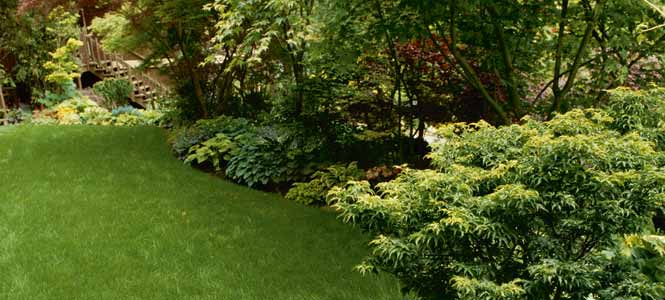
Insect predators
The larvae of hoverflies, ladybirds and lacewings have voracious appetites for aphids and black fly so it is worth attracting these insects into your garden to breed. Adult hoverflies feed on nectar and pollen (adult ladybirds will also eat pollen) - they love flowers with open centres such as chamomile, corn marigold, sunflowers, poppies, poached egg plant and aster. Ladybirds and lacewings need a sheltered spot to over-winter so make sure there are crevices they can crawl into, in the form of a log pile, rocks or old hollow plant stems.
Companion planting
Companion planting is all about creating plant communities which have mutual benefits to each other. These plant combinations can be a natural way to control pests or weeds, limiting the amount of harmful chemicals you use in your garden. A classic example is growing carrots with leek, onions or mint to deter carrot fly. Although there is limited scientific research surrounding companion gardening, many gardeners find it extremely beneficial to their crops and flowers. For more information and suggested plant partnerships see our Companion Planting Guide.
Herbs
Herbs are fantastic plants to grow when creating a wildlife garden. The flowers are excellent sources of pollen and nectar for bees, butterflies and other insects, and many are good companion plants, repelling flea beetles, black fly, carrot fly and aphids. Herbs such as rosemary and lavender can be used for low hedges and all herbs produce delicious ingredients for use in the kitchen! If you're looking to create a container garden for wildlife, herbs are very adaptable and can be used as foliage plants amongst your bedding. Take a look at our article on 'How to grow herbs' for inspiration. Buy herb seeds here.
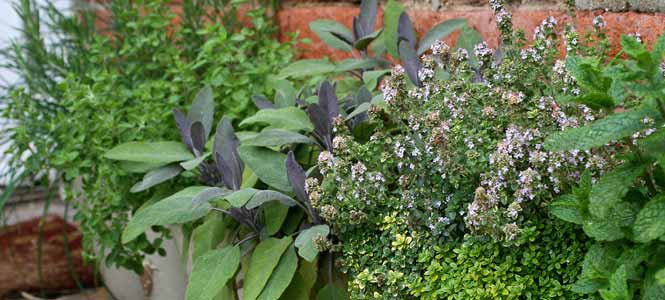
Natural fertilisers and weed suppressants
Green manure
If you have flower beds or a vegetable plot which lies empty over winter, consider growing green manure as a natural fertiliser and weed control. These plants maintain and improve the nutrient content of your soil and compete with weeds, minimising the need for weed killers and reducing the need for synthetic fertilisers. This organic method is a great way to maintain healthy soil, and all the organisms within it. Buy green manure here.
Organic matter
Organic matter such as manure or recycled green waste is a fantastic soil improver and will reduce or eliminate the need to use synthetic fertilisers. It helps nutrients in the soil become available to plants, feeding them naturally. Organic matter can also be used as a mulch over the soil surface in the spring or autumn. This will act as a weed suppressant and help retain soil moisture throughout the hot summer months.
Now you're armed with advice on deterring unwanted pests, visit our wildlife hub page and learn how to attract visitors that keep pests under control.
Quick Links:
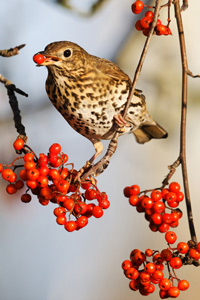
Trees and shrubs provide nesting sites and shelter for birds, who eat all sorts of garden pests. Plants with berries will be especially attractive.
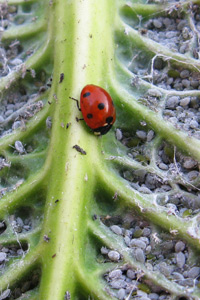
The larvae of hoverflies, ladybirds and lacewings have voracious appetites for aphids and black fly so it is worth attracting these insects into your garden to breed.
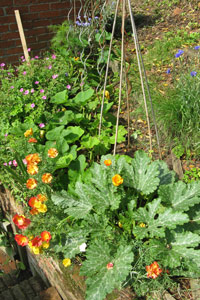
Companion planting can be a natural way to control pests or weeds, limiting the amount of harmful chemicals you use in your garden.
Sign Up For Exclusive Special Offers




© 2024 Thompson & Morgan. All rights reserved. A division of Branded Garden Products Limited.

